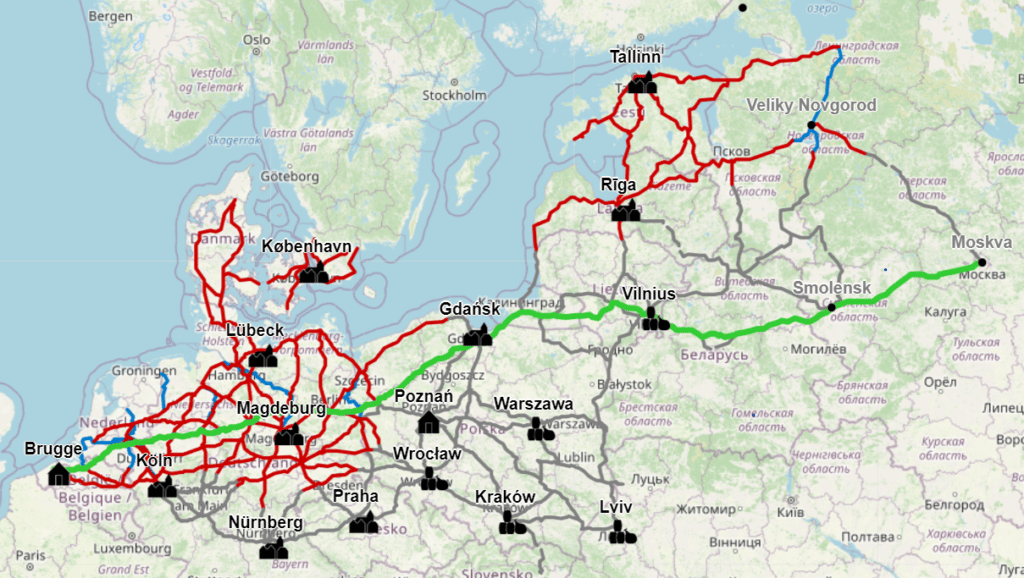Ever wanted to know how long it takes to travel around the Roman Empire? Want to look at ancient statues from the comfort of your couch (or work desk)? Here is a selection of interactables and webpages to help you spend a few hours – and maybe learn something too.
Interactive (ancient) travel maps
Getting from one side of the Roman Empire to the other would have been no easy task. However, researchers at Stanford have designed an interactive map that can give us a flavour of how travel would have been during Roman times. ORBIS is built upon data from over 600 historical sites and covers nearly 10 million square kilometers, giving a small glimpse into the reality of travelling in 200CE.
According to ORBIS, a trip between London and Rome would take almost a month – compared to under three hours on a modern commercial flight! The trip in a carriage could cost nearly 1000 denarii, roughly three years of wages for a soldier at the time.
For those interested in the late Middle Ages of Western Europe, a similar map exists: Viabundus. Originally planned as the digitisation of Friedrich Bruns and Hugo Weczerka’s Hansische Handelsstraßen (1962), Viabundus now contains historic routes from much of north-west Europe,
Currently tool can plan a route as extreme as Brugge to Moscow any year between 1350 and 1650. According to the map, that journey would take almost a third of a year – with payment required for the many tolls and ferries on the way.
If your home town isn’t on the map, keep an eye out as the team at The Roads Project are continuing to research medieval routes and plan to update Viabundus with further areas.

Google arts and culture
Tech giant Google promises to “preserve and bring the world’s art and culture online so it’s accessible to anyone, anywhere.” They’ve partnered up with cultural institutions across the world to present high quality representations of artefacts, sites, and artworks. They also present a wide range of games and interactables. You can check out the works and life famous artists like Rembrandt, or play a word puzzle themed around heritage. In one of their ‘experiments’, you can try your hand at recreating historic pots on a virtual pottery wheel.
Google’s arts and culture platform was around before the pandemic, and they’ve clearly had time to polish their product. The design is sleek and modern, offering an easy introduction to many historial and cultural themes. The wide range of resources and games available makes it especially suited for younger history fans. Even for adults, this is a great place to learn about arts and the past.
Olympia
Take a trip back to Ancient Greece with Common Grounds. The original site of the Olympic Games has been recreated by Microsoft in collaboration with The Hellenic Ministry of Culture and Sports. There are a few curated ‘tours’ of the site, or you can fly around the 3D models freely. You can even go inside many of the virtual buildings, such as Pheidias’ workshop, where the Statue of Zeus (one of the Wonders of the Ancient World) would have been crafted.
It’s no replacement for visiting the real site in Greece, however – although you might find yourself inspired to book a trip to Olympia.
Gif it up & Europeana

Each year, Europeana hosts a GIF making competition in association with partners across the globe.
‘Gif it up‘ runs in the autumn, and entrants are encouraged to reuse artistic works from a wide variety of databases to create gifs.
The contest highlights how we can adapt old artworks and image, and give them a new – perhaps humorous – aspect.
Europeana hosts a vast catalogue of photographs and artworks from many institutions across Europe, many of which are licensed for free use. They encourage users to think about the possibilities of how old media can be reused, and provide guides on licensing and copyright.

